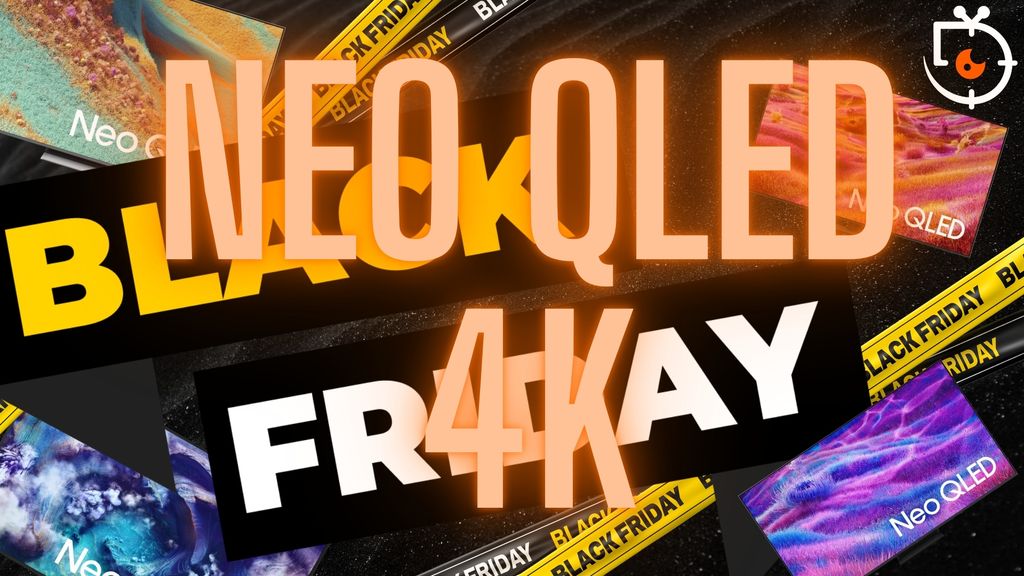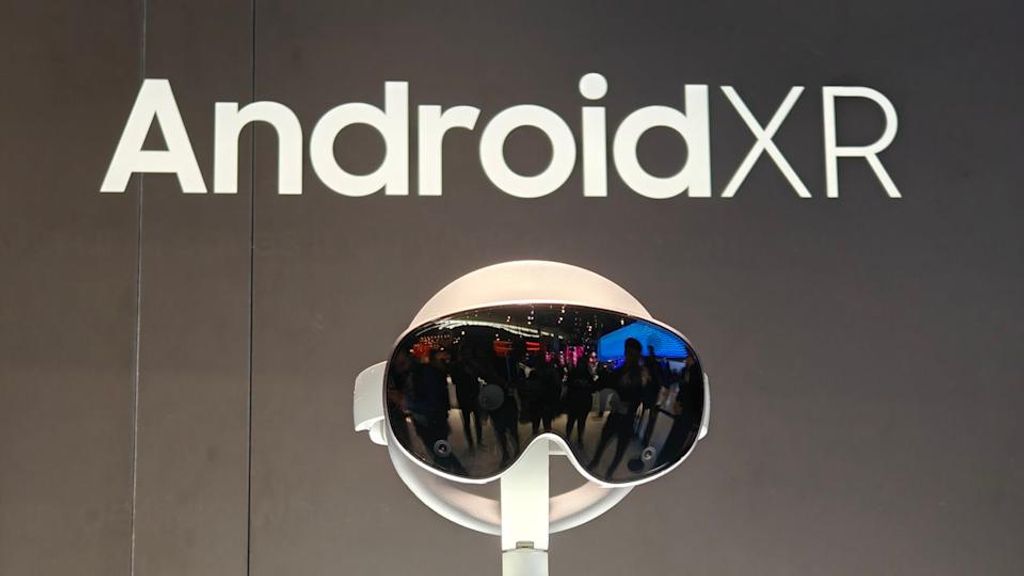- Matching (Score)
- Our verdict
- Competing TVs
- TV appearance
- Where to buy
- Contrast and black detail
- HDR effect quality
- Factory color reproduction
- Color reproduction after calibration
- Smoothness of tonal transitions
- Image scaling and smoothness of tonal transitions
- Blur and motion smoothness
- Console compatibility and gaming features
- Input lag
- Compatibility with PC
- Viewing angles
- Daytime performance
- TV features
- Apps
- Playing files from USB
- Sound
- Panel details
Samsung QN80F 100" Review
Available screen sizes:
Diagonal with a different matrix: , , ,
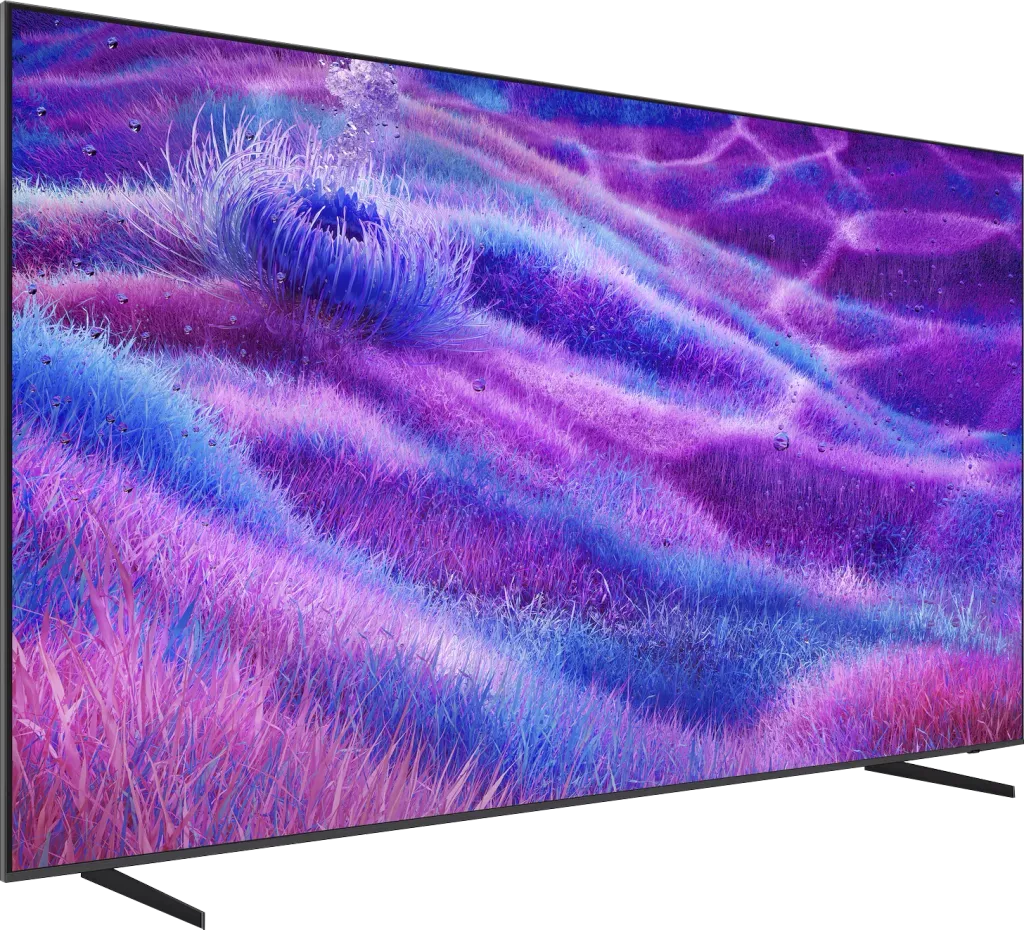
Complete the survey to find out the result
Panel type: LCD VA Refresh rate: 144Hz Brand: SAMSUNG Resolution: 3840x2160 System: Tizen Model year: 2025
The Q80 series from Samsung is almost a classic in the world of televisions. For years, it has been regarded as the "golden mean" in the portfolio of the Korean manufacturer. Models from this line have never been the cheapest, but they offered clearly more than the basic proposals from the QLED series, while not yet entering the price range of flagship models. In 2025, the manufacturer takes a step further and presents a true giant – the 100-inch QN80F. A television of such size sounds like a dream come true for movie enthusiasts, but it also raises the question: do changes in image quality accompany the size compared to the smaller diagonals that we have already had the chance to test? Or will we see some compromises instead? It's time to check how this colossus performs in practice!
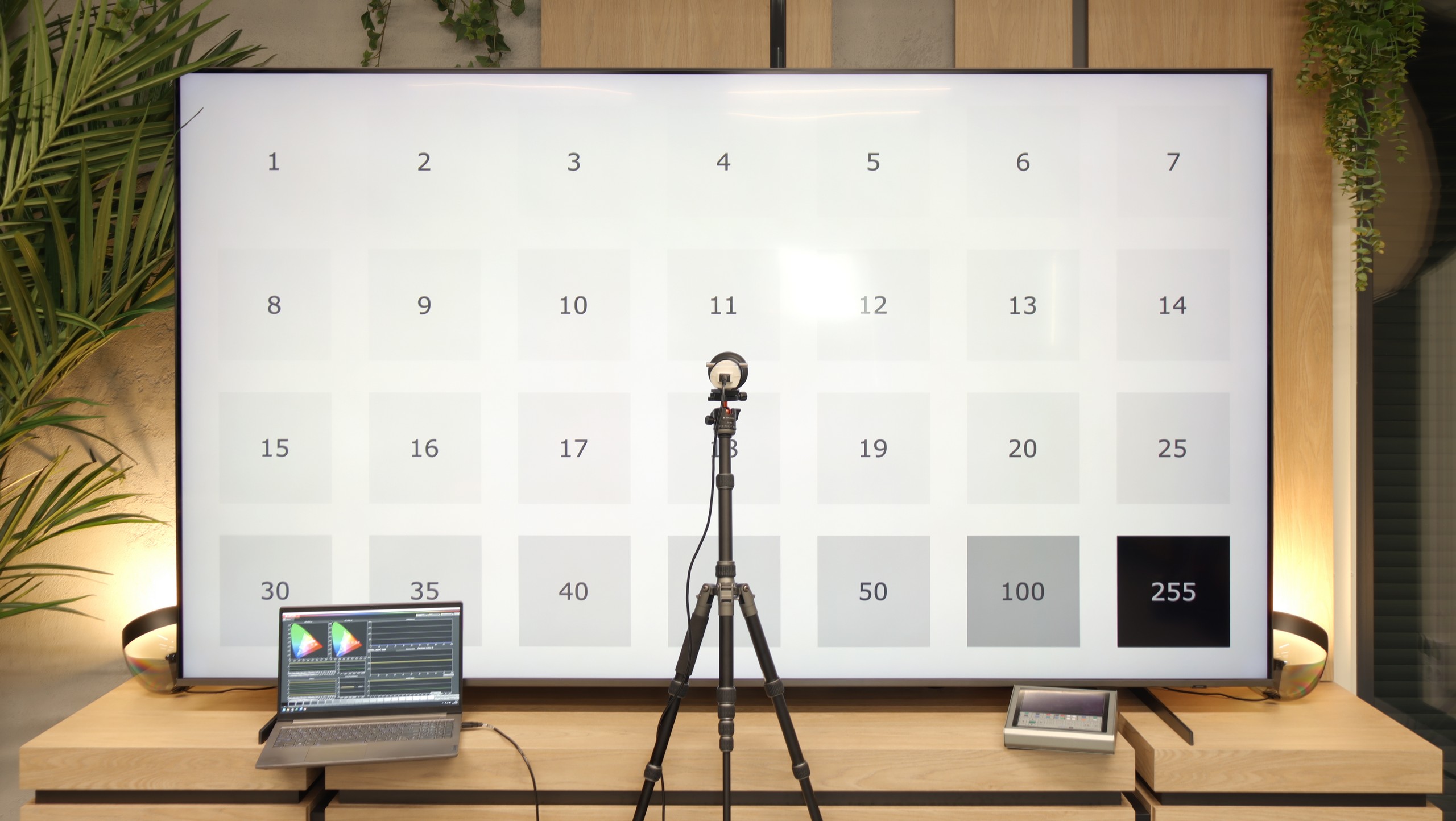
SAMSUNG QN80F 100" - Our verdict
7.4
Overall rating
QN80F is the first-ever “eighty” from Samsung available in a 100-inch version (previously “just” 98 inches 😉) and is also the model that has entered the series with Mini LED backlighting. It must be said that it performs really well at this scale. Although the number of dimming zones may not impress given such a massive screen, the contrast and blacks are solid, and combined with high brightness, the TV can deliver great experiences when watching movies and series in HDR. The 144 Hz panel ensures smooth motion, and the full set of features for gamers – VRR, ALLM, and Game Motion Plus – makes QN80F hard to label as anything other than a screen designed for both console and PC. Additionally, there's a fast and stable Tizen that provides access to all key apps and can act as a smart home hub via the proprietary SmartThings app. Of course, there are some shortcomings – there’s no Dolby Vision, no USB recording, and the viewing angles at 100 inches can be really problematic. Mini LED also has its limitations, so those expecting absolutely perfect blacks need to keep this in mind. On the other hand, given the current prices of OLEDs in this size, it’s hard to speak of any real competition.
QN80F is a versatile TV, well-crafted and providing plenty of satisfaction for everyday use. Looking at the history of this series, one can be sure that as soon as it appears on reasonable promotions, it will be one of the most interesting options in its class. And if Samsung fine-tunes the minor flaws with updates, this 100-inch beast may turn out to be really hard to beat, much like its smaller variants.
Advantages
HDR brightness up to 1300 nits
Good black levels - MiniLED with a VA panel
Fast 144 Hz panel and 4 HDMI 2.1 ports
Many features for gamers: VRR, ALLM, and a great gamebar
Low input lag (<10 ms)
Fast Tizen operating system with SmartThings support
Supports Dolby Atmos
Disadvantages
Poor viewing angles
Modest number of dimming zones for a 100" screen
Lack of Dolby Vision and HGIG
Movies and series in UHD quality
7.2
Classic TV, YouTube
7.0
Sports broadcasts (TV and apps)
6.7
Gaming on console
8.6
TV as a computer monitor
8.6
Watching in bright light
7.0
Utility functions
7.7
Apps
8.7
Sound quality
6.7
Complete the survey to find out what fits your preferences
SAMSUNG QN80F 100" - Competing TVs in this price range
SAMSUNG QN80F 100" - TV appearance
HDMI inputs: 0 x HDMI 2.0, 4 x HDMI 2.1 (48Gbps) Outputs: Toslink (Optical audio), eARC (HDMI), ARC (HDMI) Network Interfaces: Wi-Fi 2.4GHz, Wi-Fi 5GHz, Ethernet (LAN) 100Mbps
Build quality: Premium
Stand type: Legs
Bezel color: Graphite
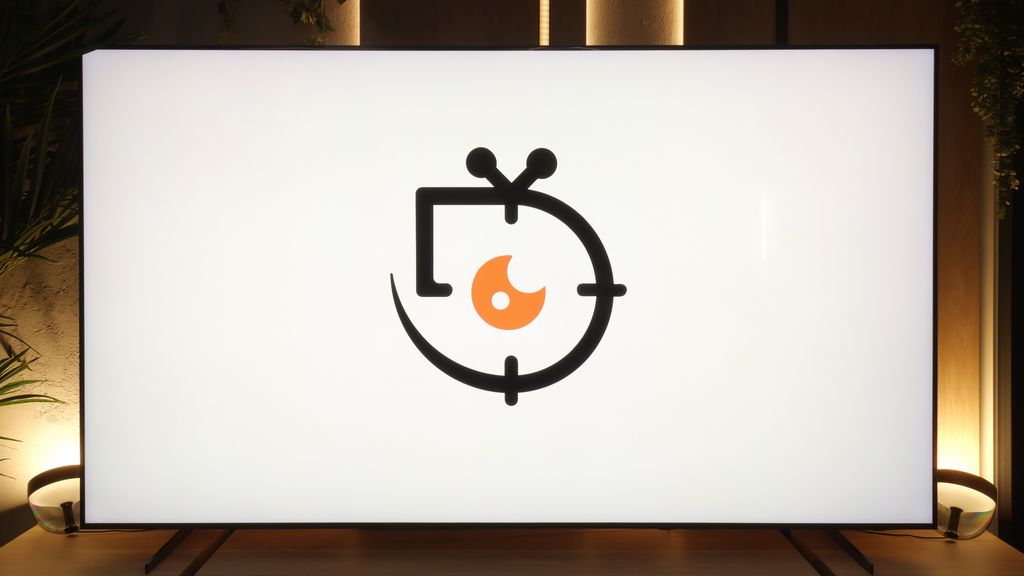

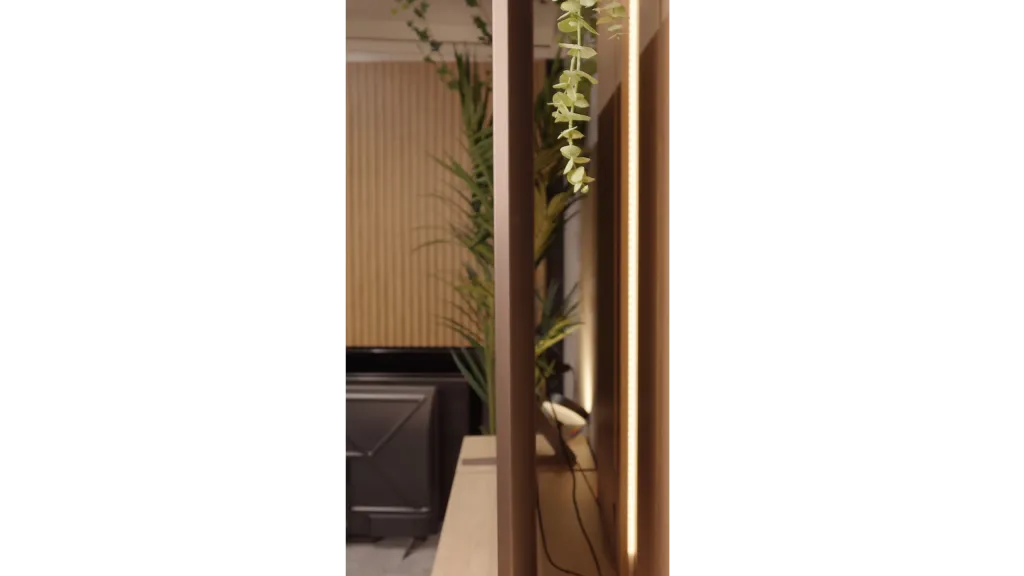
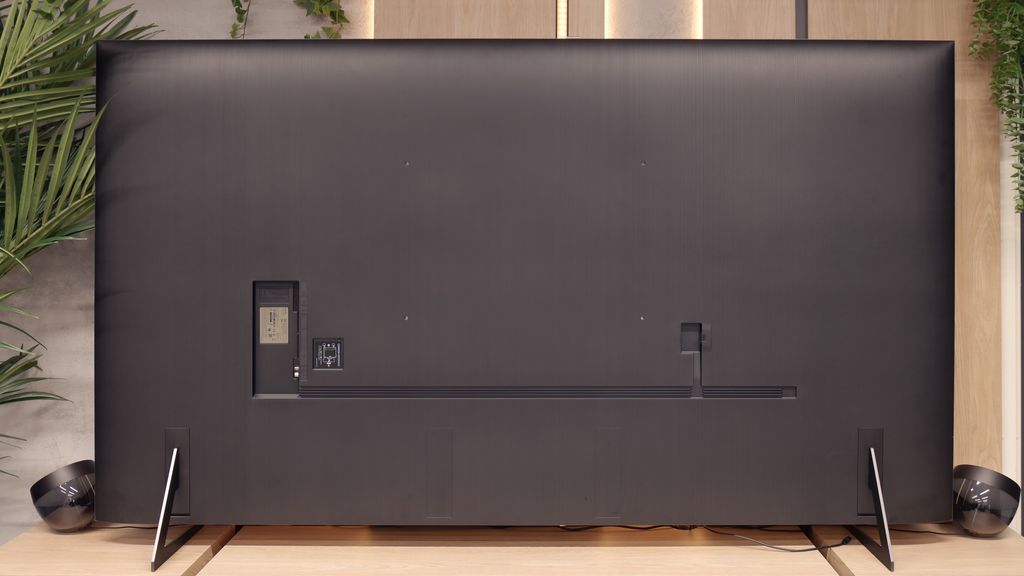
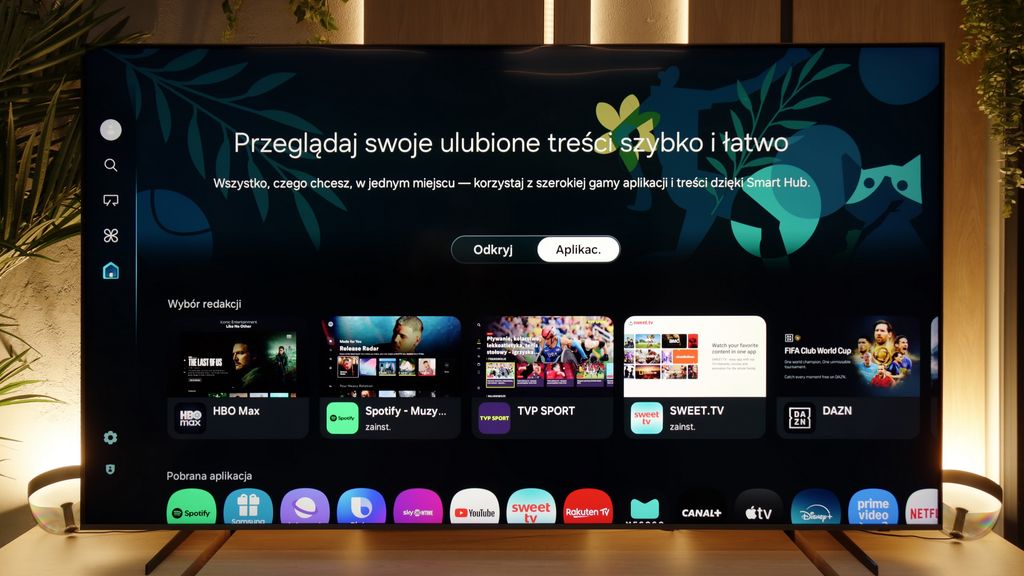
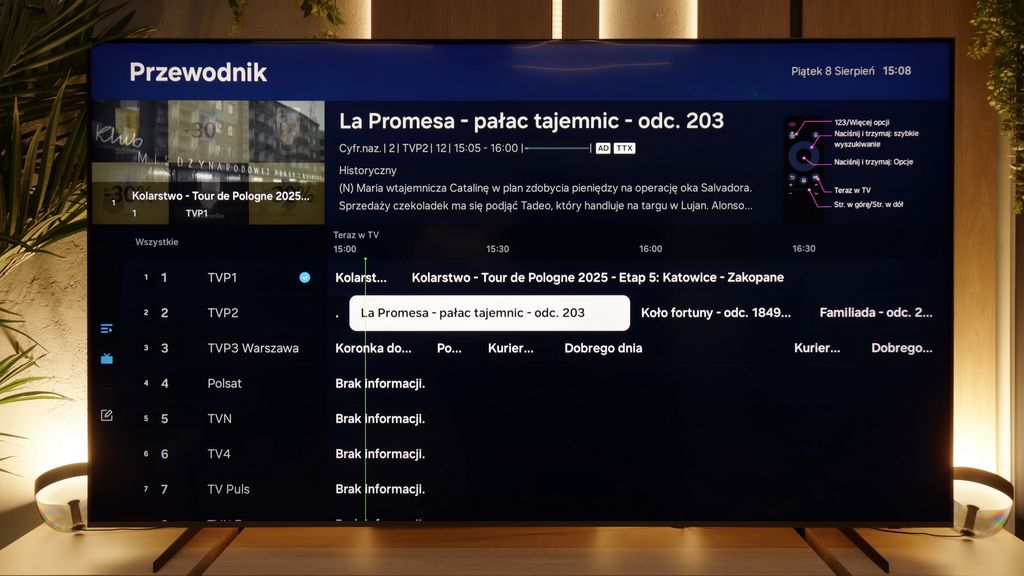
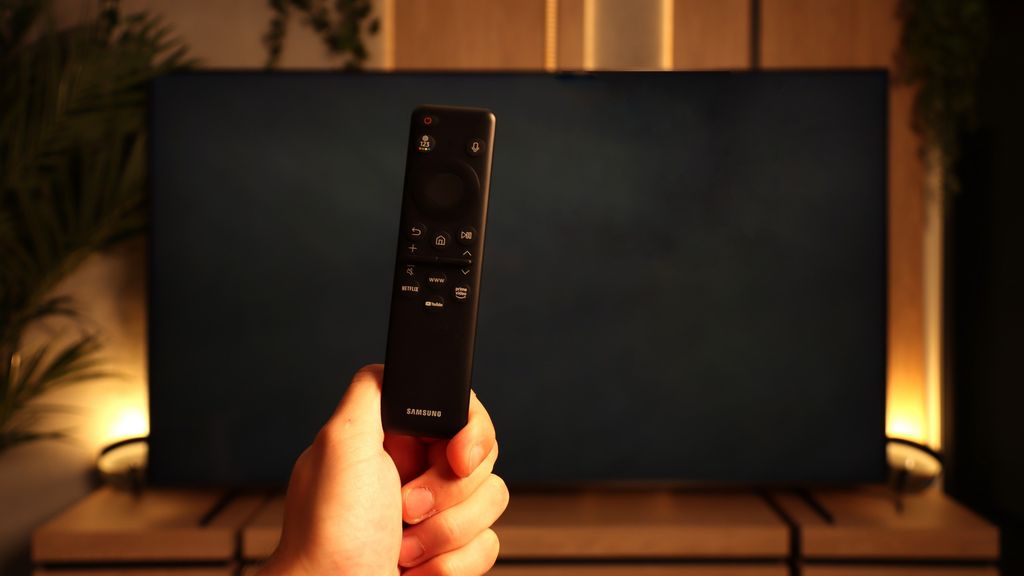
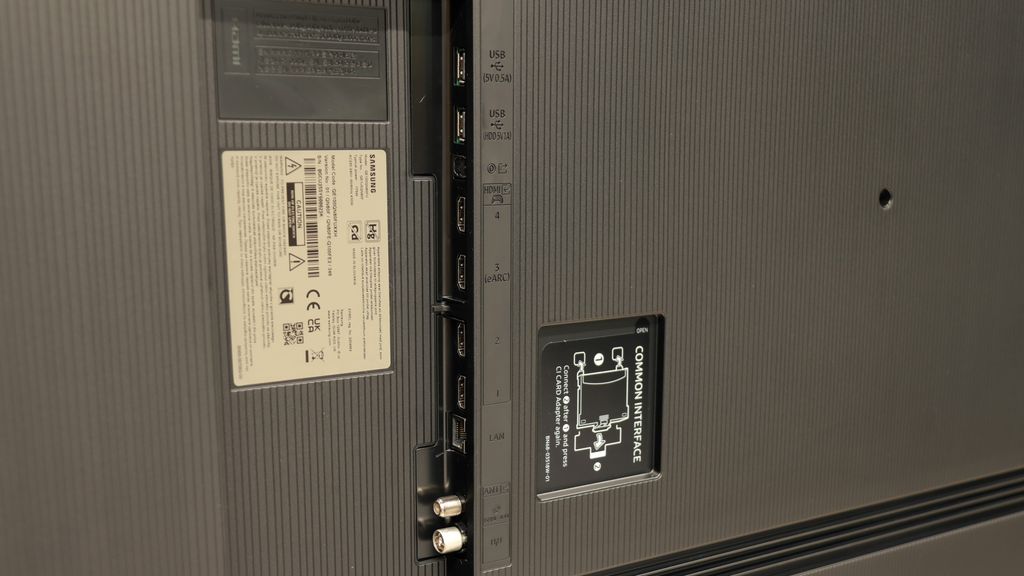
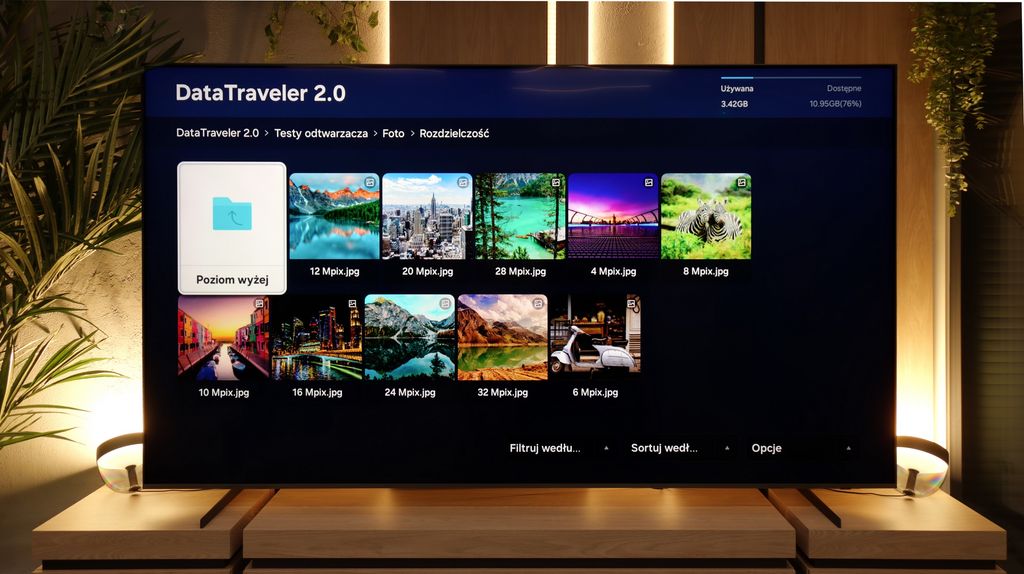
Stand: Fixed
Flat design: Yes
Accessories: Stand
In terms of design, the QN80F follows Samsung's tradition – it's the lowest model in the series that can already be classified as premium, mainly due to its build quality. You can immediately see the difference compared to cheaper models: instead of a plastic frame, we get a thin, metal surround around the screen, giving it a modern character. Interestingly, despite its gigantic size, the 100-inch version is not overly thick. The back of the casing is slightly rounded and relatively simple, allowing the TV to be mounted almost flush with the wall using a flat (and sturdy) bracket. Samsung has also taken care of practical details – on the back, we find clever cable management channels that help conceal wires and keep the living room tidy. The difference compared to smaller sizes is noticeable in the stand. For the 100 inches, the manufacturer opted for two solid metal feet on either side of the screen – a classic central base simply wouldn’t hold up against such a behemoth. The QN80F has a neat appearance that’s hard to criticise.
Buy at the best price
Select size:
SAMSUNG QN80F 100" - Contrast and black detail
7.1/10
Local dimming function: Yes, number of zones: 120 (10 x 12)

Result
94,400:1

Result
12,650:1

Result
31,750:1

Result
7,350:1

Result
3,000:1
Visibility of details in the lights:
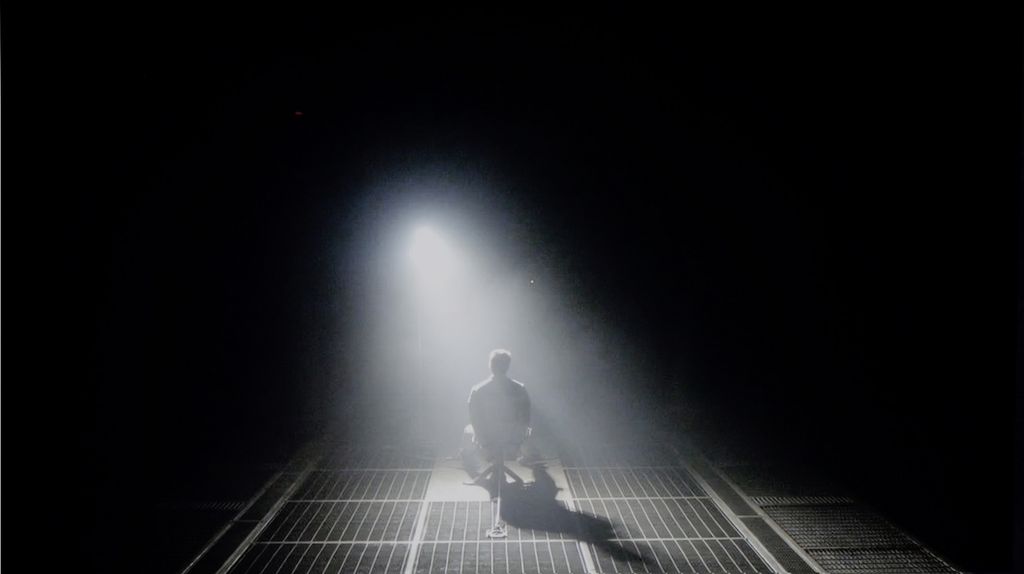
QN80F belongs to the NeoQLED family, which are Samsung's TVs based on mini-LED technology. In practice, this means local dimming zones designed to improve contrast and light separation. In the case of the 100-inch version, we have a VA panel combined with around 120 zones – a rather modest result for such a large surface area, though it has to be said that it still translates to noticeably better results than in smaller diagonals. In its best cinematic scenes, the contrast can be really strong – five-digit values are not an exaggeration, and lights separate from blacks in a way that makes a strong impression at first glance. However, you can't fool physics. Given that such a huge screen has to 'work' with a relatively small number of zones, there are moments when the TV struggles with image control. For example, when a multitude of bright, small elements appear on a black background in the film's final scene, you can see halos and blooming around them. This shows that even with a well-crafted algorithm, mini-LED still has its limitations. Generally, though, the contrast can be considered very good, and in everyday viewing, most users will be fully satisfied. Just keep in mind that this model won't provide the absolute black levels known from OLEDs, just like no LCD television will.
Halo effect and black detail visibility:
SAMSUNG QN80F 100" - HDR effect quality
6.5/10
Supported formats: HDR10, HDR10+, HLG Color gamut coverage: DCI P3: 90.0%, Bt.2020: 67.9%
Luminance measurements in HDR:

Result
1150 nit

Result
721 nit

Result
875 nit

Result
377 nit

Result
849 nit
When it comes to HDR in Filmmaker mode, the QN80F can make a great first impression. Our lab tests showed that under the best conditions, the TV can achieve brightness exceeding 1200–1300 nits. These are truly remarkable results that make HDR effects in many films look incredible. The TV is simply bright enough that it doesn't have to artificially adapt the image – the bright parts of the scene have the right 'power' and actually look like a light source. Of course, the lab is one thing, and everyday viewing is another. In practice, during film scenes, brightness typically hovers around 700–1100 nits. These are still excellent values that, in most cases, provide a strong sense of realism and make the lights on the screen truly blinding. The problem arises in exceptionally difficult sequences, where, like almost every mini-LED, it reveals its limitations. A good example is Sicario 2: scenes with the helicopter in the night sky look much weaker, and the lights lose intensity, dropping to around 370 nits, making it hard to speak of serious awe. Additionally, there's the issue of colours. Although we are dealing with a QLED, the coverage of the DCI-P3 colour gamut is about 90%. This is a rather average result for a quantum dot TV. In practice, this means that some colours may appear less saturated than we would expect, especially in demanding HDR productions.
Scene from the movie “Pan” (about 2800 nits)

Scene from the movie “Billy Lynn” (about 1100 nits)
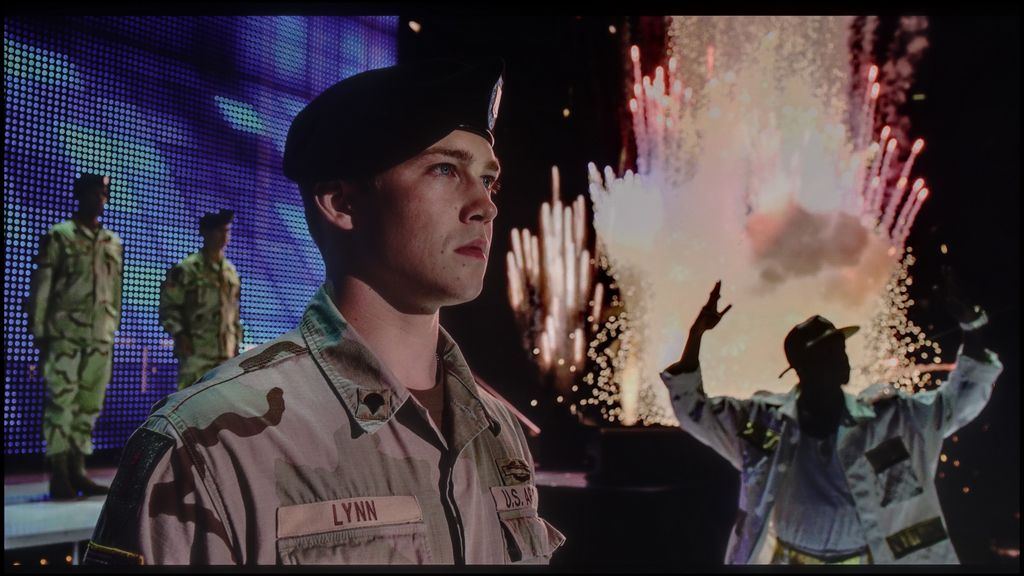
During test screenings with real films, the QN80F demonstrated that it can rise to the occasion. Admittedly, the colours aren’t as intense as on the best screens – there’s a slight reduction in saturation and some coverage issues across a wide spectrum of colours, which makes certain hues appear a bit "calmer". Nevertheless, the image still looks natural and pleasant to the eye. In dynamic scenes, like those from Mr or Billy Lynn, the TV managed to maintain colour and contrast consistency, although there were moments when some fine details appeared a bit too dark or, conversely, were slightly brightened. However, this is more of a curiosity for purists than a real issue during everyday viewing. In the mid-range segment, such results can be considered really solid, and it would be hard to expect more without opting for top-tier equipment.
HDR luminance chart:
HDR luminance
Samsung QN80F supports the two most important HDR formats in the world of movies and series: standard HDR10 and HDR10+ with dynamic metadata. The lack of Dolby Vision may initially seem like a significant drawback, as it is currently the most widespread format, but in practice, the situation is not as dramatic as in recent years. More and more streaming services and films support HDR10+, so we are not limited solely to "static" HDR10. Why is the proliferation of dynamic standards so important? The difference is clearly visible in practice. Thanks to dynamic metadata, the television can better adjust contrast and brightness to individual scenes. Instead of one curve for the entire movie, we get precise tuning shot by shot. Scenes that previously looked relatively flat come to life. A good example is the test sequence with horses – before, the image seemed washed out, but with HDR10+, depth and details appeared in the shadowy areas. This just shows why it is so important for even a relatively bright television like the QN80F to have access to dynamic metadata.
Static HDR10
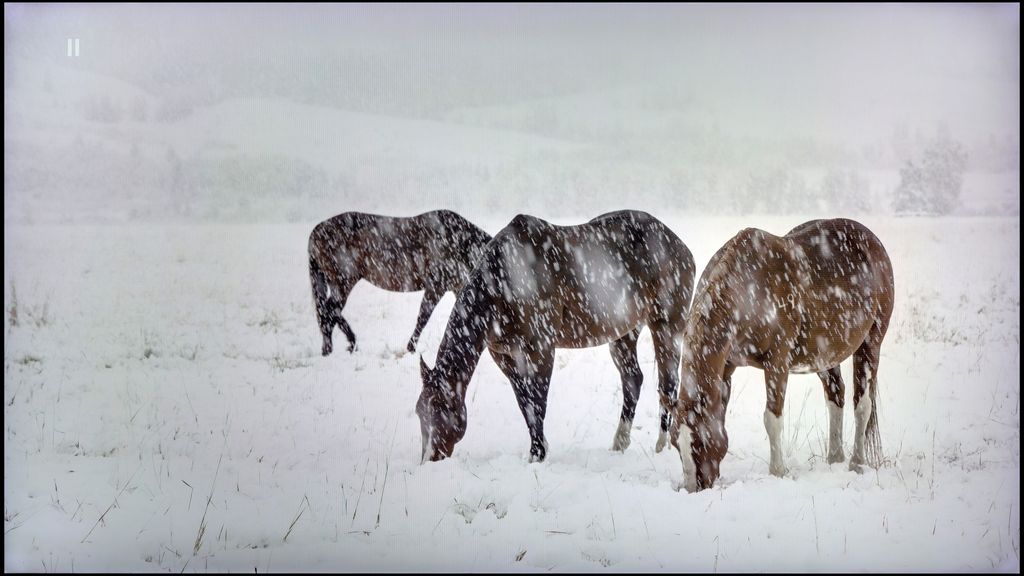
Dynamic: HDR10+
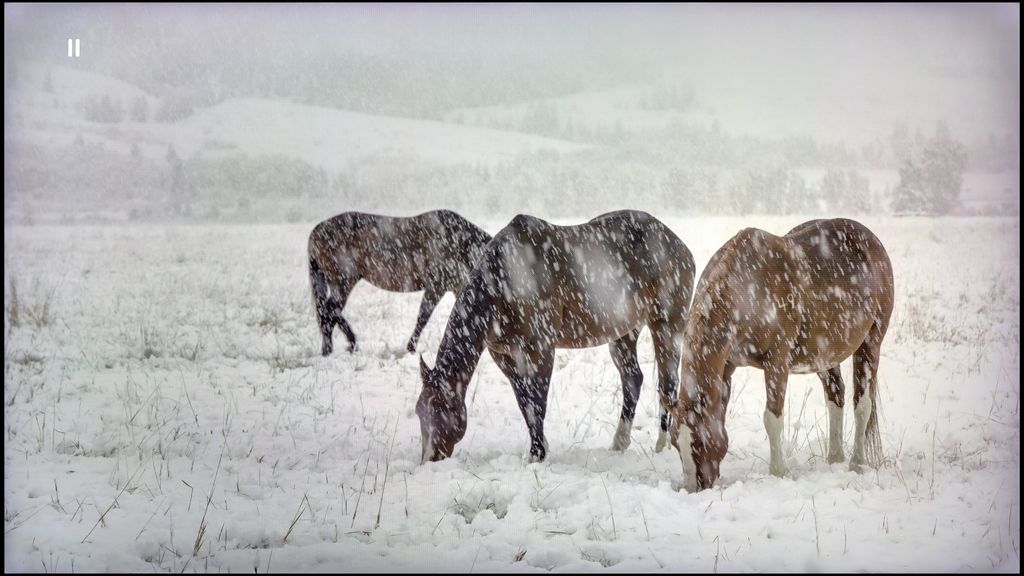
Factory color reproduction
6/10
Samsung QN80F performs best in Filmmaker mode, which is designed to faithfully reproduce the creators' intentions. And indeed – this is the mode where the TV shows its potential. But let's not fool ourselves, it’s far from perfect. In SDR content, a significant issue emerged with white balance. Slight deficiencies in green and a clear excess of red caused the screen to take on a pinkish hue. You don't even need measuring tools to notice this – in everyday viewing, the subtly shifted colour palette could be quite noticeable, and in colour checker tests, the colours nearly "jumped" outside their reference fields. With HDR content, the situation looked a bit better, as the white balance was closer to ideal, but another problem emerged – brightness management. The EOTF curve often caused the image to become too bright, which spoiled the impression of contrast, and in dynamic scenes, it led to a slight "flicker" in perception. We've actually mentioned this before in the sections about black levels and HDR. The good news, however, is that Samsung provides plenty of tools for improvement. The QN80F allows for very detailed calibration, including a 20-point white balance. And since the manufacturer has left us with so many options, we decided to see how the TV would perform after a solid correction.
Color reproduction after calibration
8.3/10
After calibrating the QN80F, it immediately showed that it has much more to offer. The pink hue that used to spoil the viewing experience has disappeared, and the white balance finally looks as it should – natural and without excessive deviations. The colours have gained depth, and the image has become more saturated and coherent, making movies simply more enjoyable to watch. It's a bit like taking a light mist off the screen – suddenly everything appears sharper and clearer. Brightness management has also improved. The TV no longer gets lost so easily in dynamic changes, and the EOTF graph shows that the curve tracking is significantly more stable. Of course, there are no miracles – the limited number of zones still means that small, bright elements can be slightly washed out, but that's just a result of the design rather than the settings. After this adjustment, the QN80F feels like a more mature piece of equipment, and watching movies finally provides the satisfaction expected from even a higher-end television.
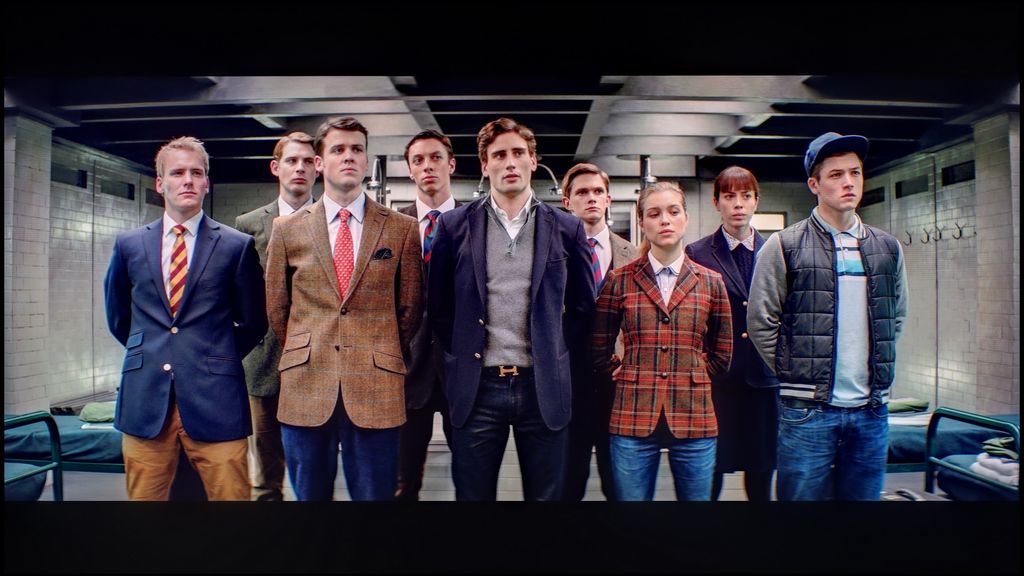

SAMSUNG QN80F 100" - Smoothness of tonal transitions
9/10
In terms of the fluidity of tonal transitions, meaning the blending of colours into one another, the QN80F performs really well. The colour gradients are smooth, the image doesn't break into artificial bands, and the sky or vast shaded surfaces look as they should – without strange patches or interference. It particularly excels in scenes with dark tones, where many televisions can struggle and produce ugly artefacts. Here, everything remains coherent and clear. Admittedly, in the brightest areas, you might occasionally notice slight banding, but that's a detail that only very demanding viewers, analysing the image frame by frame, would pick up. In everyday use, there's practically nothing to complain about. The QN80F gives a sense of confidence that tonal transitions won't be a distraction.
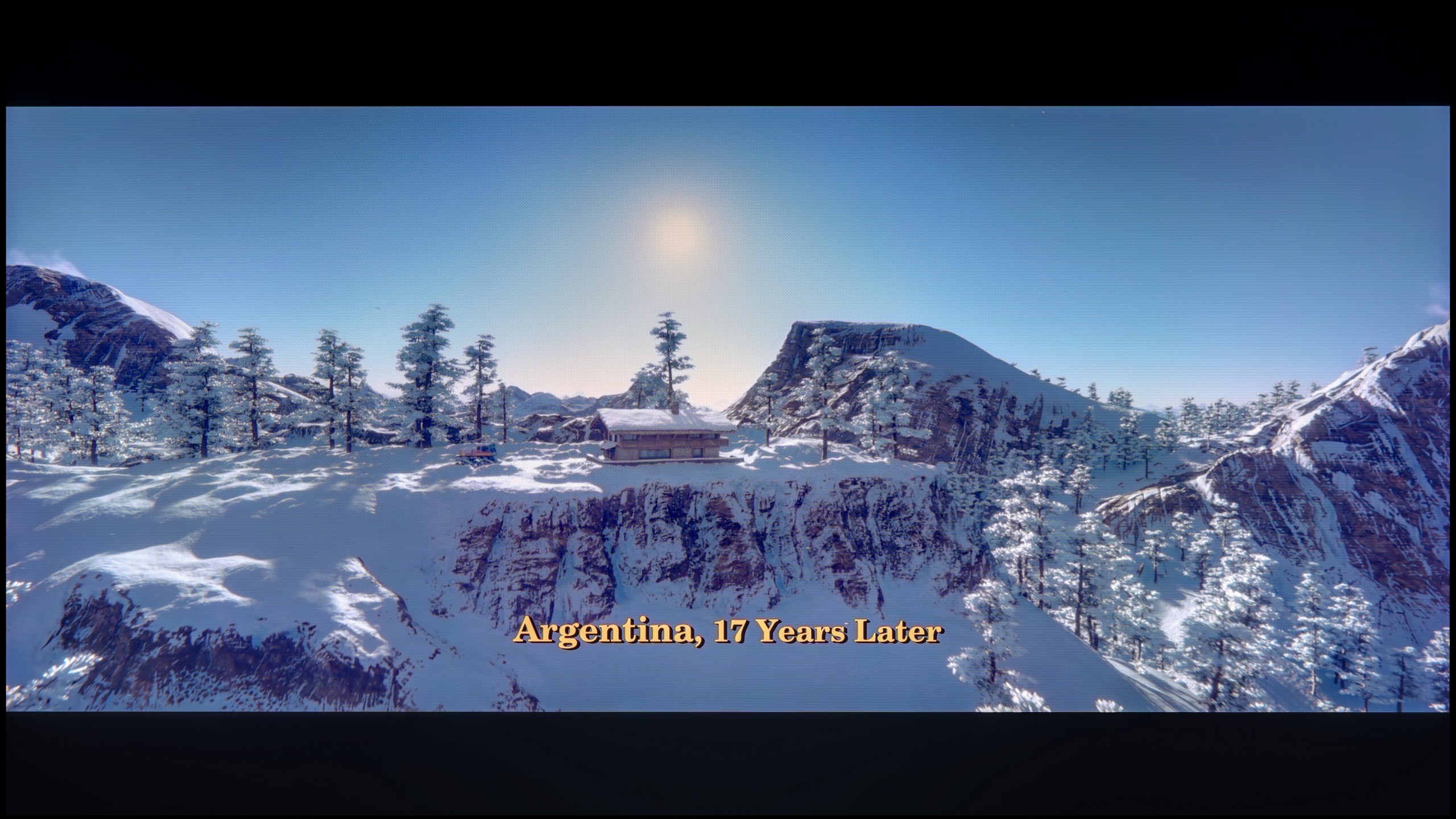

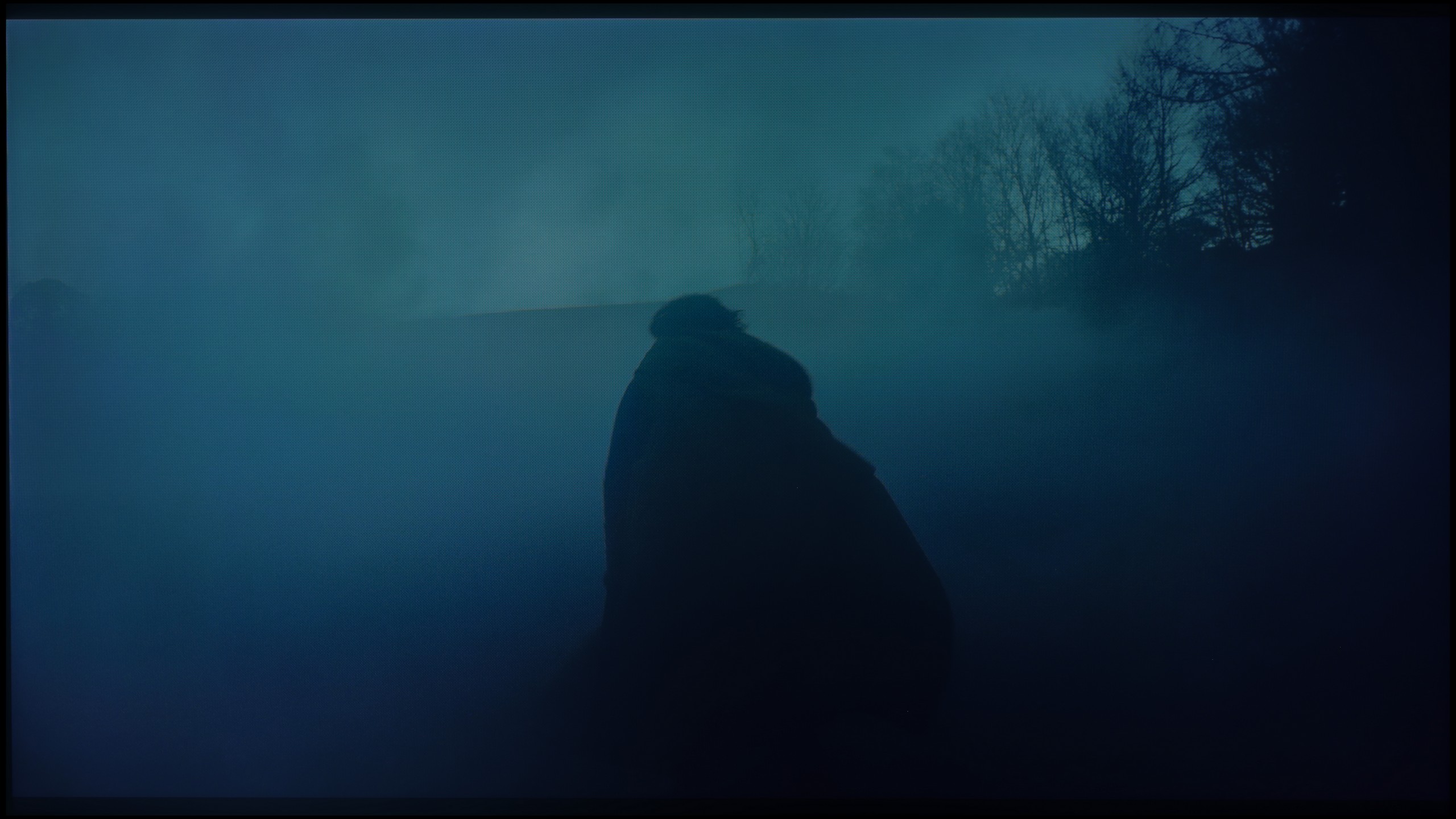
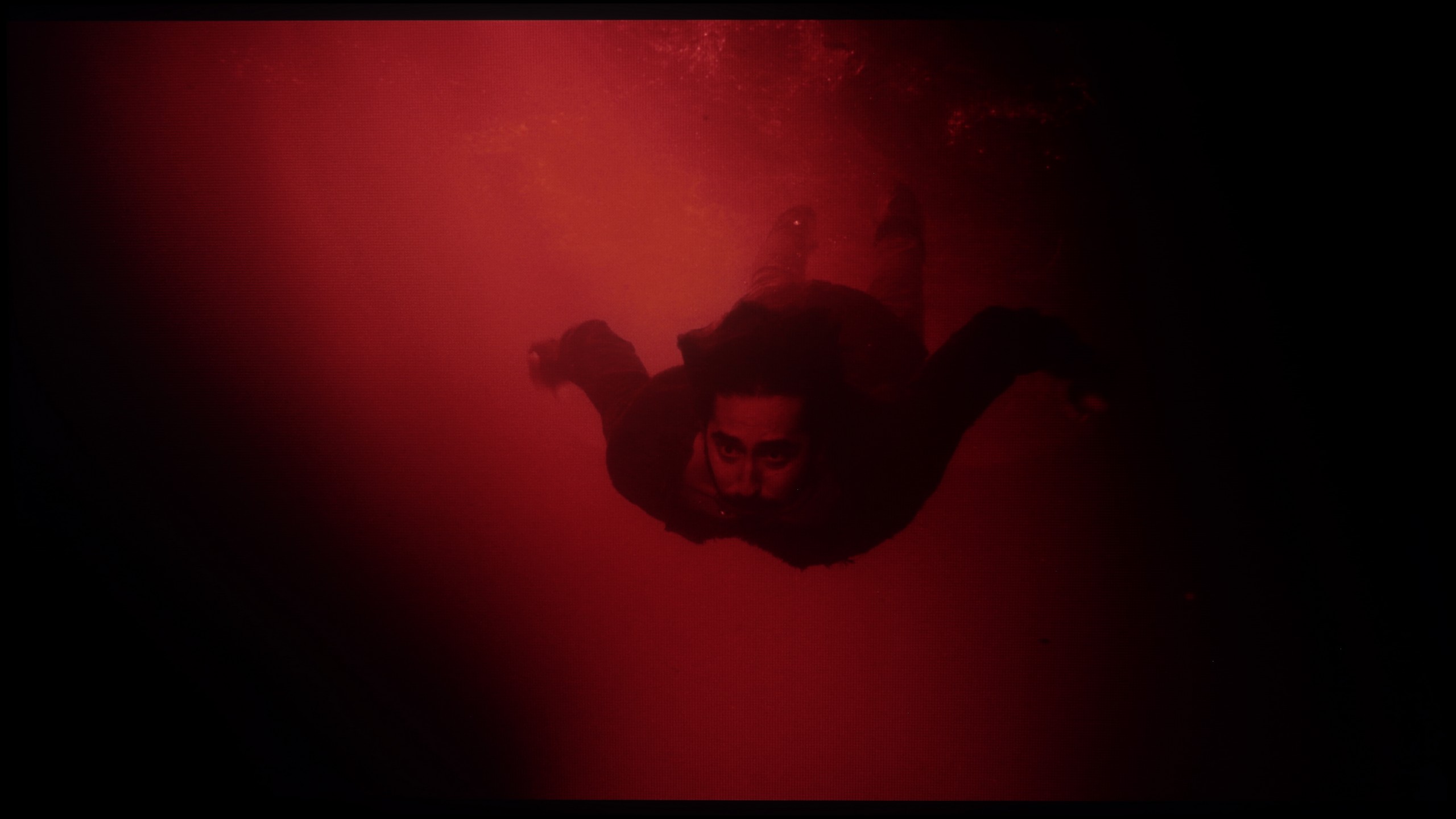




Image scaling and smoothness of tonal transitions
7.5/10
Smooth transition function
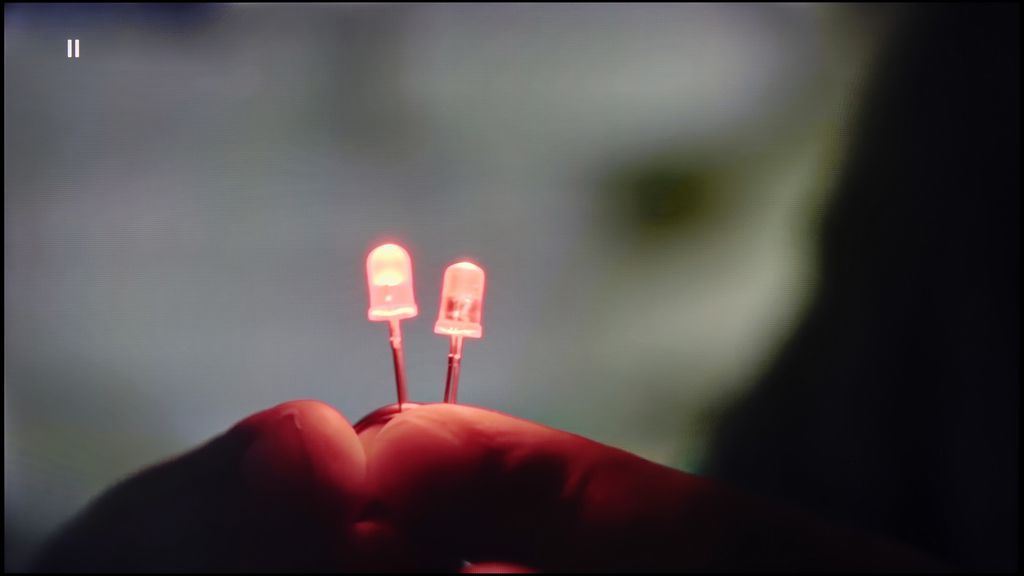
Image without overscan on the SD signal
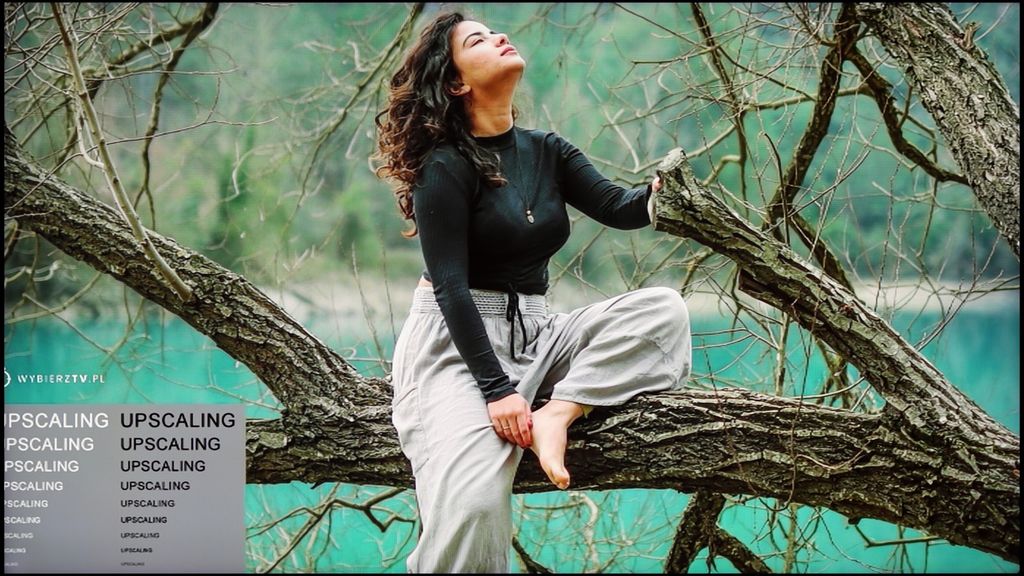
With lower quality materials, such as YouTube videos or older television recordings, the QN80F can show both its strengths and weaknesses. If strange colour transitions or artefacts start to appear on the screen, it's worth reaching for the noise reduction feature. The best setting is at the "medium" level – it smooths out problematic segments while not blurring the entire image. However, one compromise must be kept in mind: this feature always removes film grain. If someone enjoys its presence in older productions, it's better to leave the reduction off, as regardless of the setting, the grain simply disappears.
Resolution scaling, or upscaling, is another strong point for Samsung. The QN80F may not be the best television on the market, but it performs very well in its price class, which is crucial for such a large size as a 100-inch screen. Even low-quality materials can gain a second life – the image becomes sharper, more readable, and overall, much more pleasant to view. A weak point remains overscan, which is slight cropping of edges in very low resolutions (e.g., 576p), something that has been a longstanding issue for Samsung. Fortunately, in everyday viewing of HD and 4K content, this is practically of no significance anymore.
SAMSUNG QN80F 100" - Blur and motion smoothness
7/10
Maximum refresh rate of the panel: 144Hz
Film motion smoothing option: Yes
Blur reduction option: Yes
BFI function 60Hz: Yes, 60Hz (image flickers)
BFI function 120Hz: No
Brightness drop with BFI: 69%
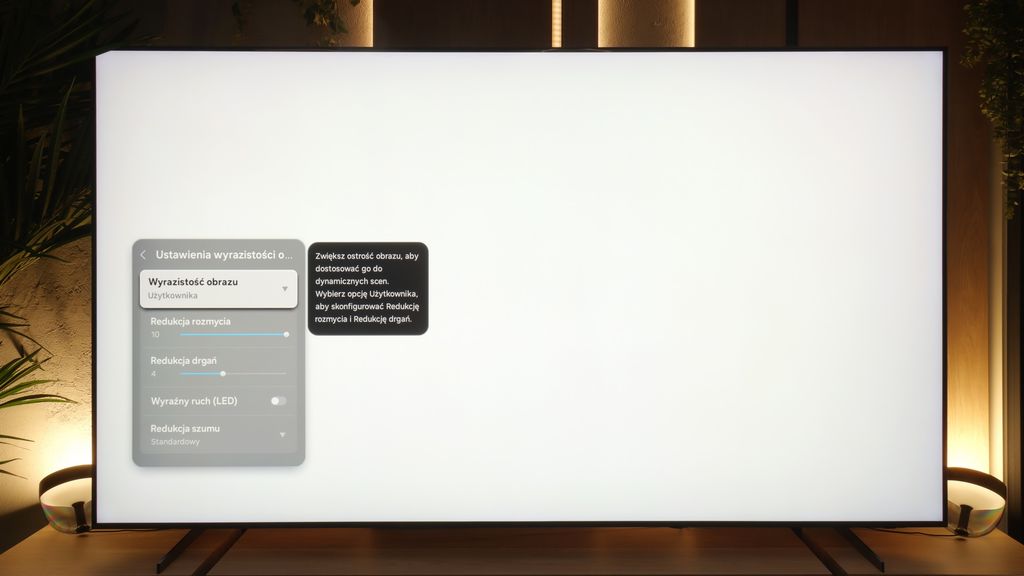
QN80F features a 144 Hz panel, and this is evident in practice – with full refresh, the image is incredibly smooth, and motion blur remains at an acceptable, barely noticeable level. However, this mode is mainly aimed at PC gamers. The most important point of reference in everyday use remains the 120 Hz refresh rate, and here a certain crunch arises. During the UFO test, we noticed ghosting of rapidly moving objects – it looked as if the television had the BFI (Black Frame Insertion) feature permanently enabled, which in practice led to an unpleasant effect of double edges. We still don't know if this is a software issue or a peculiarity of this model, but in its current state, it's hard to commend such behaviour.
Blur (native resolution, maximum refresh rate):


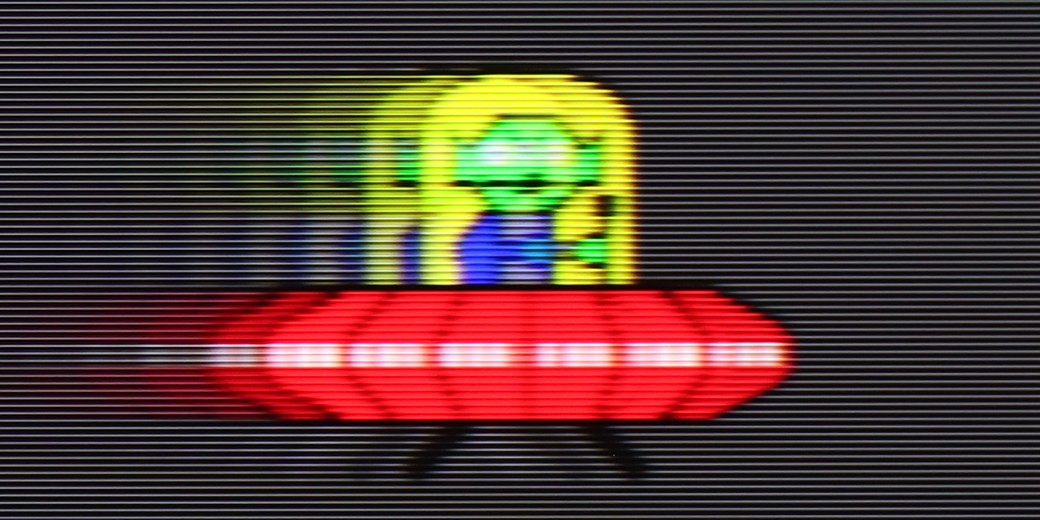
Blur (BFI function enabled):
Image flickers in this mode



Blur (4K@144Hz):

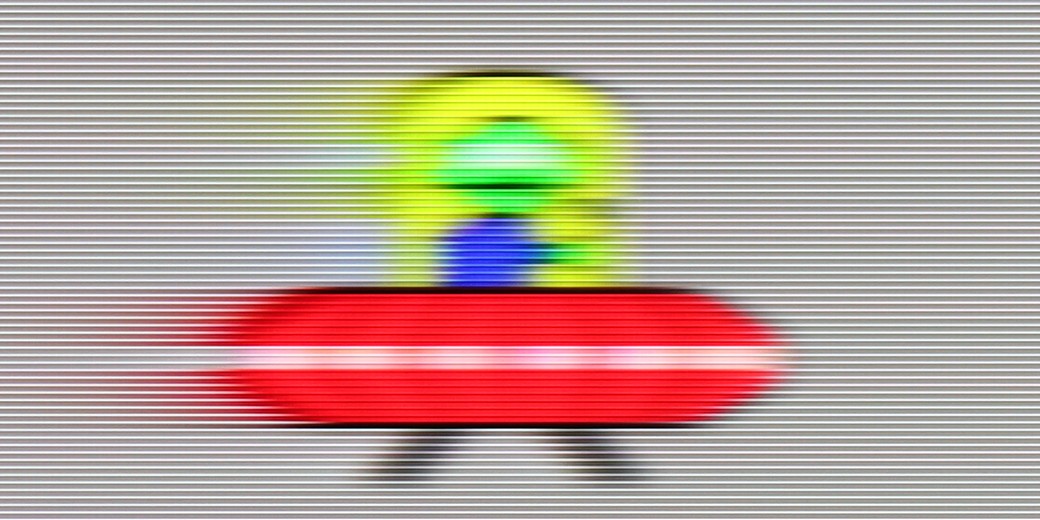
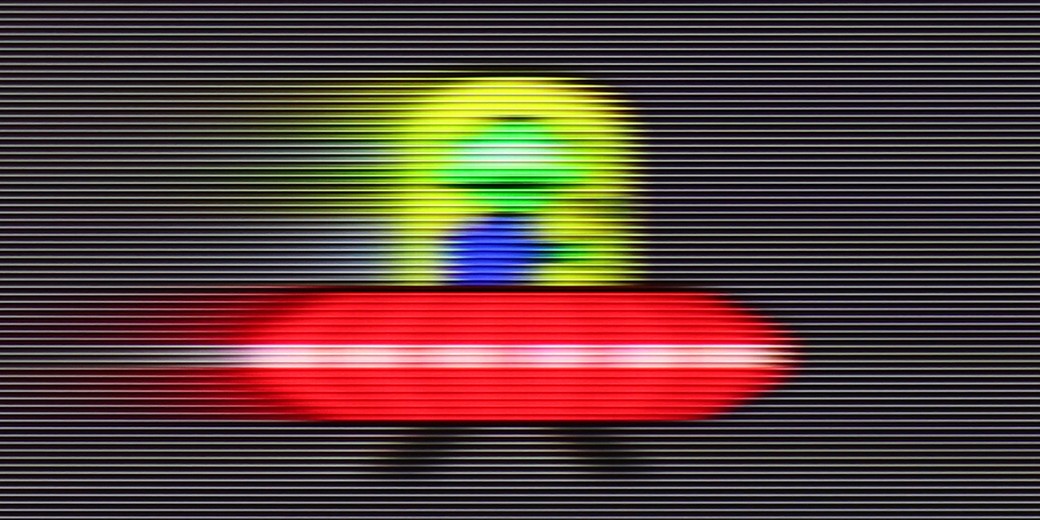
Fortunately, Samsung is making up for it in another area – the motion smoother for films and sports works very well. The manufacturer has provided two sliders that allow users to adjust the image to their own preferences. The first one, motion blur reduction, is responsible for increasing the number of intermediate frames and makes fast-paced sports scenes look clearer and smoother. The second, judder reduction, adjusts the intensity of smoothing in films and series, allowing you to choose between maintaining the cinematic 'judder' and a more fluid, television-like character. This way, everyone can set the motion as they like – from a natural image reminiscent of cinema to almost 'theatrical' smoothness.
SAMSUNG QN80F 100" - Console compatibility and gaming features
8.2/10
ALLM: Yes
VRR: Yes
VRR range: 48 - 144Hz
Dolby Vision Game Mode: No
Correct implementation of HGIG: No
1080p@120Hz: Yes
1440p@120Hz: Yes
4K@120Hz: Yes
Game bar: Yes
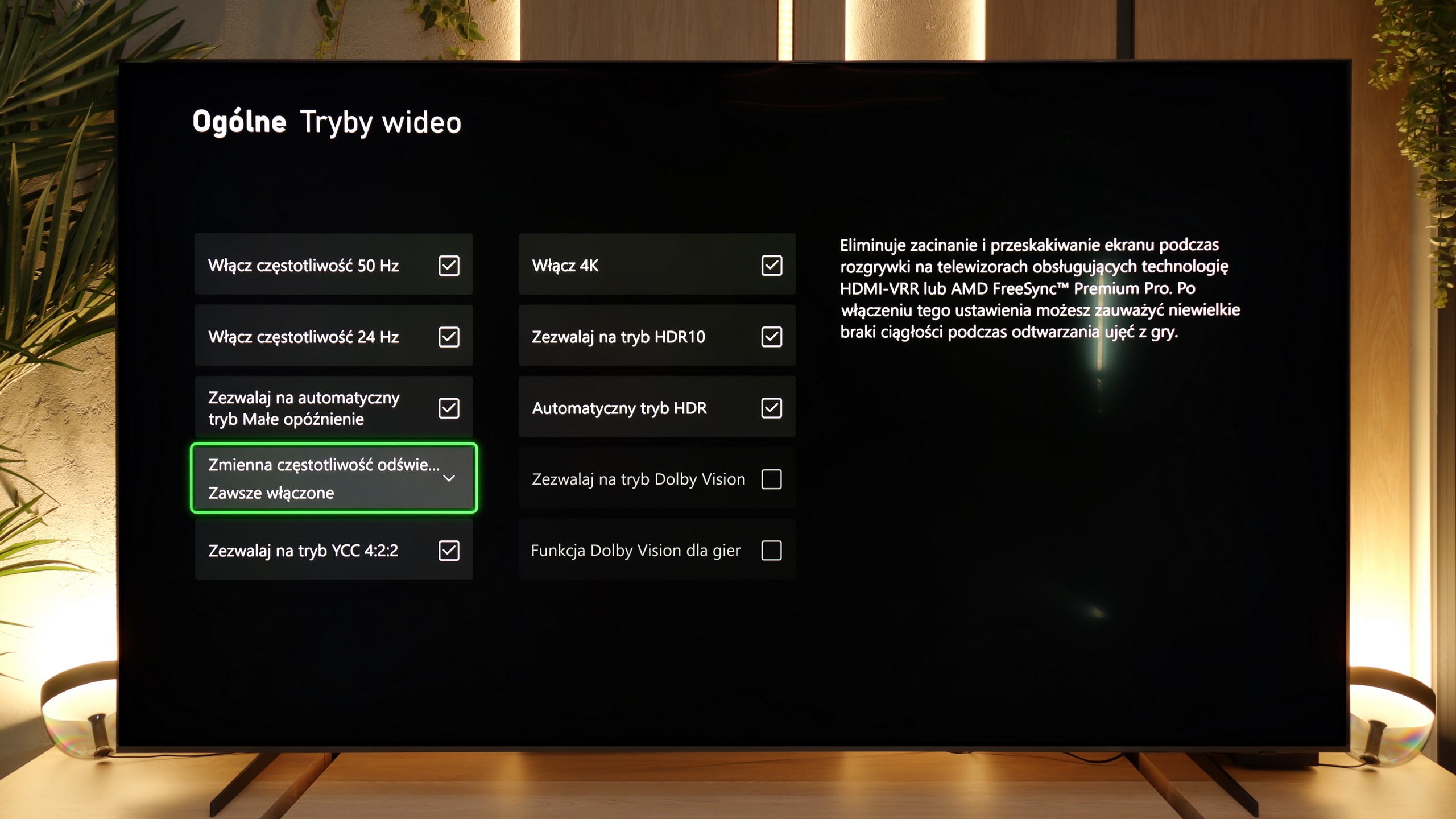
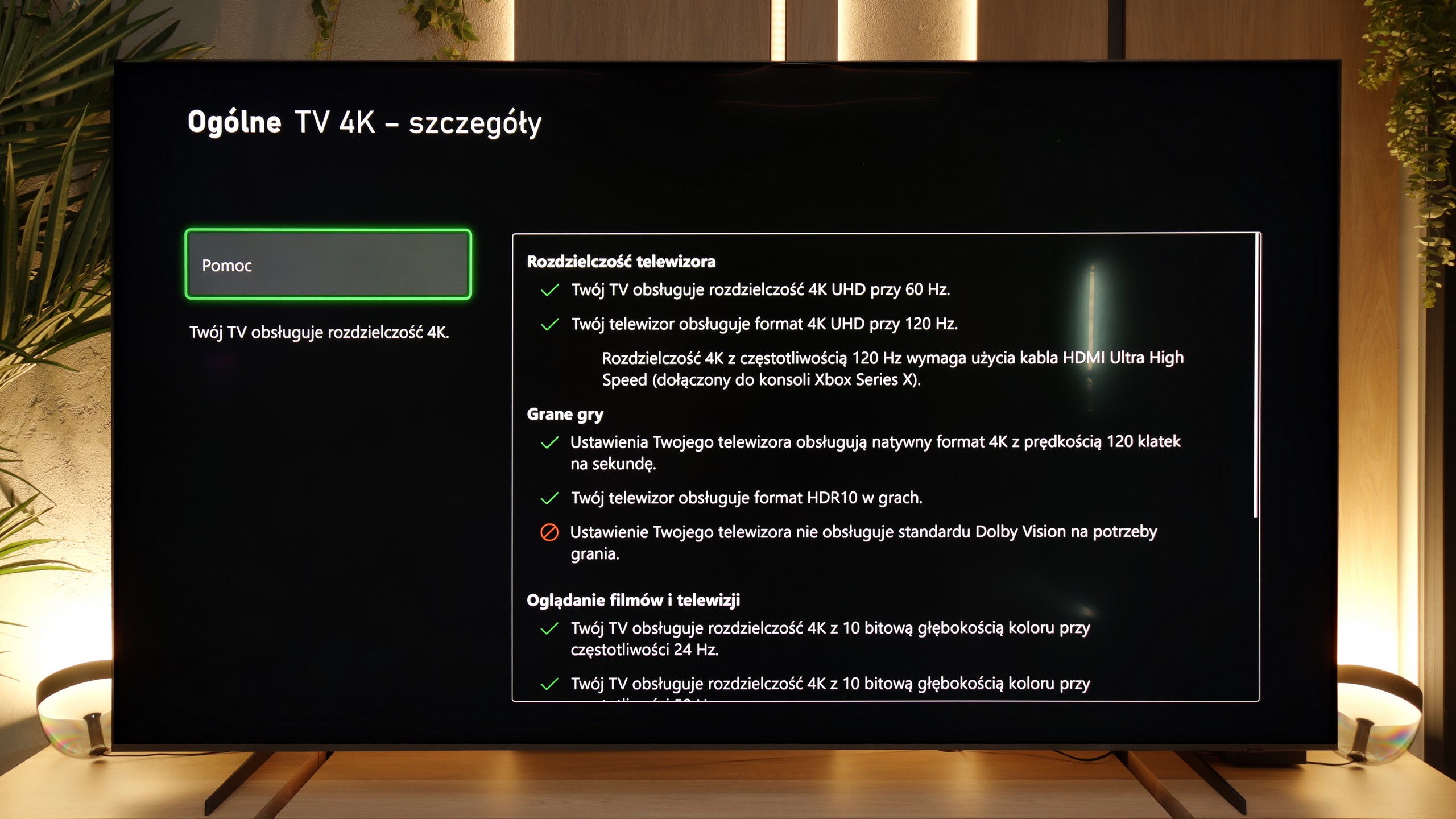
Samsung QN80F gives the impression of a TV designed for gamers. On the list of advantages, we have a 144 Hz panel, four full-featured HDMI 2.1 ports, full support for VRR and ALLM, and one of the best-designed gamebars on the market. Additionally, there’s the Game Motion Plus motion smoother, which also works in games without actually increasing input lag, making the QN80F an absolute standout in this category. In practice, this means you can enjoy smoother visuals without losing responsiveness, which is a dream for many console gamers!
As is usual with Samsung, there’s no Dolby Vision in games, and that’s nothing new. However, we were much more surprised to find that in the models from 2025… the HGIG function has disappeared. This feature allowed consoles like the PlayStation 5 and Xbox Series X to perfectly match HDR tone mapping to the TV's capabilities. In the current firmware, the QN80F simply doesn't have this option – it seems more like an oversight than a conscious decision by the manufacturer, but as of the day of testing, HGIG is not available. Due to this one absence, the QN80F shifts from an almost perfect TV for gamers to a device that is only "nearly" ideal. It's quite a pity because apart from that, Samsung has created a model that truly raises the bar in the gaming hardware segment.
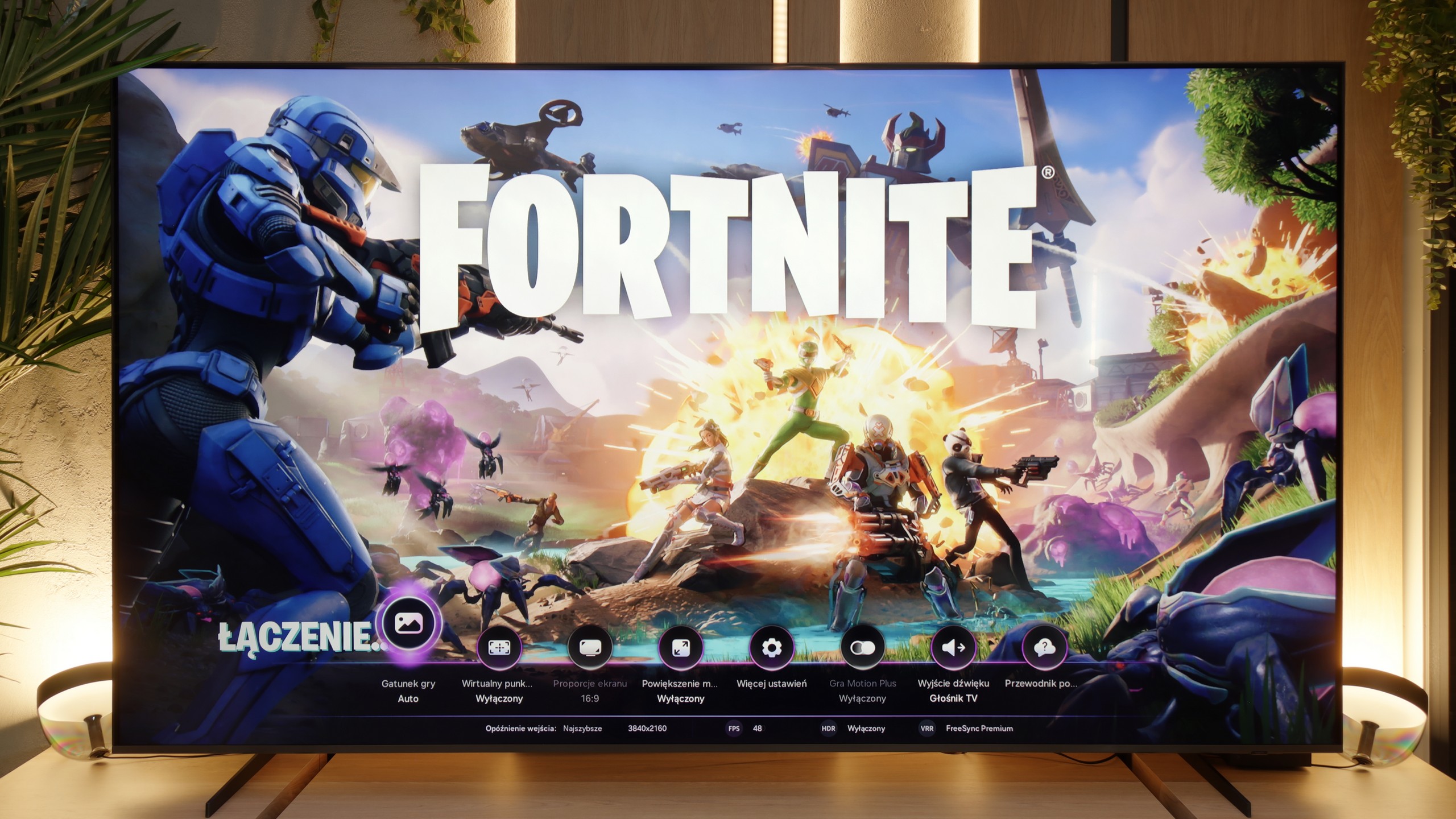
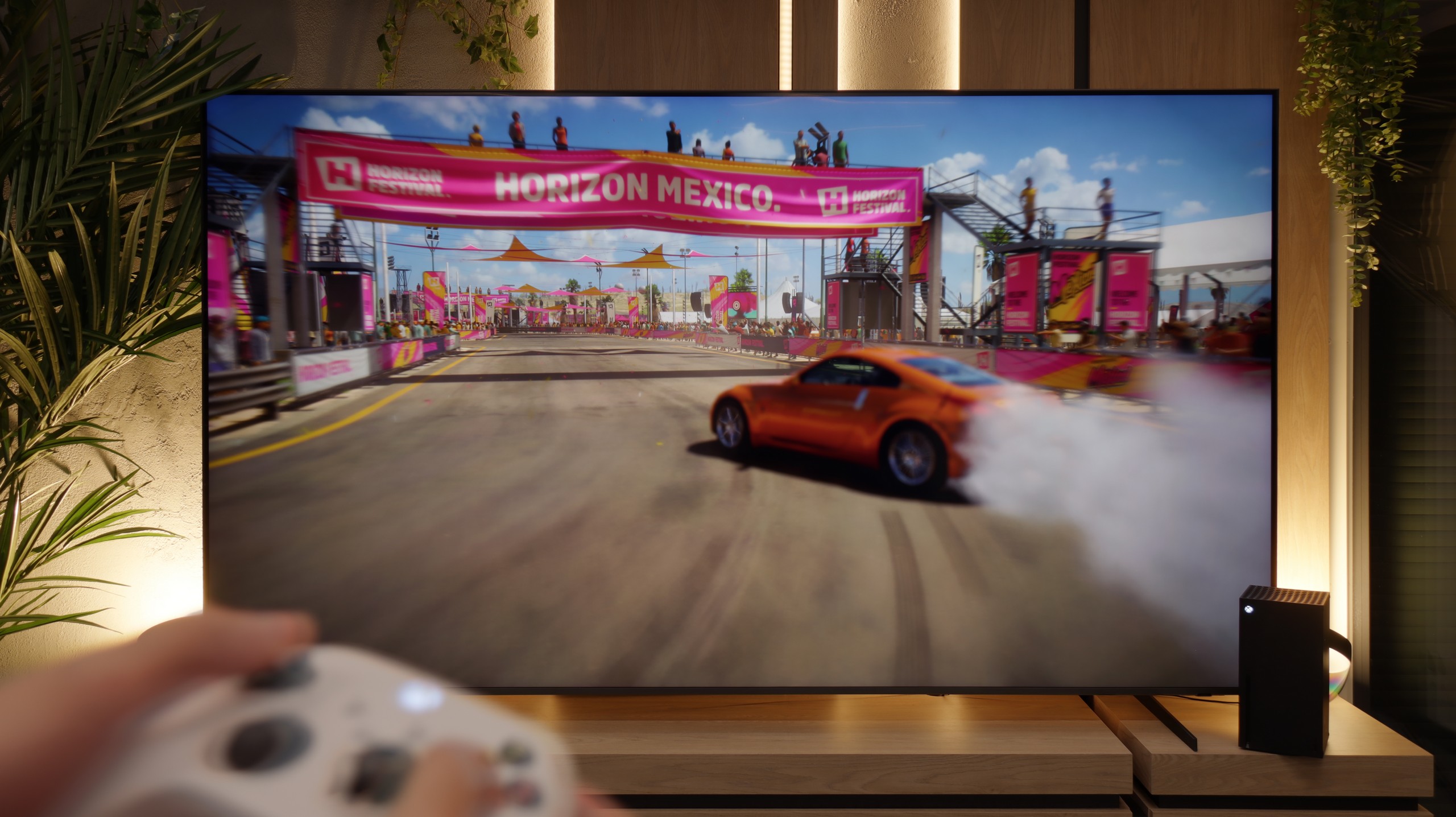

SAMSUNG QN80F 100" - Input lag
9.8/10
Input lag is something that can ruin the whole fun, but fortunately, there’s nothing to worry about with the QN80F. At 120 Hz, the lag drops below 10 ms, so it feels like the TV doesn’t even exist between the controller and the image. The response is instantaneous, everything happens exactly when we want it to. At 60 Hz, the result is around 17 ms – that’s more, but still within the bounds of full comfort. In practice, console games look and run smoothly, with no annoying lags at all. This is the moment when you can see that Samsung really has put effort into the gaming mode – the QN80F provides a sense of control and speed that one would expect more from a monitor than from a 100-inch behemoth in the living room.
| SDR | HDR | Dolby Vision |
|---|---|---|
| 1080p60: 17 ms | 2160p60: 17 ms | |
| 1080p120: 8 ms | 2160p120: 8 ms | |
| 2160p60: 17 ms | ||
| 2160p120: 8 ms |

SAMSUNG QN80F 100" - Compatibility with PC
8.6/10
Chroma 444 (maximum resolution and refresh rate): Yes
Font clarity: Very Good
Readability of dark text and shapes: Average
Input lag in PC mode (4K, maximum refresh rate): 8ms
Matrix subpixel arrangement: BGR
Max refresh rate: 144Hz
G-Sync: Yes
There’s something a bit odd about collaborating with a PC on the QN80F. When it comes to gaming, there’s no reason to worry: we have full support for 144 Hz, both G-Sync and FreeSync work, and the smoothness is truly impressive. The problem only arises during everyday computer use – particularly when we're looking at fonts instead of games. In 120 Hz mode, the picture looks nearly perfect. The letters are readable and sharp, and the only small detail you might notice is a slight dimming of thin lines. However, that’s a detail that shouldn't interfere with normal usage. Bigger issues arise at 144 Hz, which is meant to be designed for PC gamers. Instead of crystal clear fonts, a strange anomaly appears. The TV adds shadows with tiny dots to them, making the text look just odd. Thankfully, it’s more of a curiosity than a real problem. After all, it’s hard to imagine someone placing a 100-inch giant on their desk and staring at Excel sheets or Word documents from half a metre away. The QN80F is excellent for gaming, and for regular PC use, it’s better to simply stick with 120 Hz mode.
SAMSUNG QN80F 100" - Viewing angles
3.3/10
Brightness drop at an angle of 45 degrees: 71%
The viewing angles are unfortunately a weak point of the QN80F. With smaller TVs, it's still bearable, but with a 100-inch model, the flaw becomes much more noticeable. Just sitting slightly off to the side is enough for the edges of the screen to appear fainter than the centre. And when we try to watch something from a greater angle, the image simply loses its charm – colours become washed out, contrast drops, and there's no longer the depth that you see head-on. It's a pity that with such a large screen, Samsung didn't opt for coatings that would expand the angles. This is where they would make the most sense, as it's hard to expect everyone in the living room to sit perfectly in front of the screen. If someone primarily cares about wide angles, they should be looking for mini-LEDs on an IPS panel – these may not have such deep blacks, but in terms of side viewing, they perform much better.
SAMSUNG QN80F 100" - Daytime performance
7/10
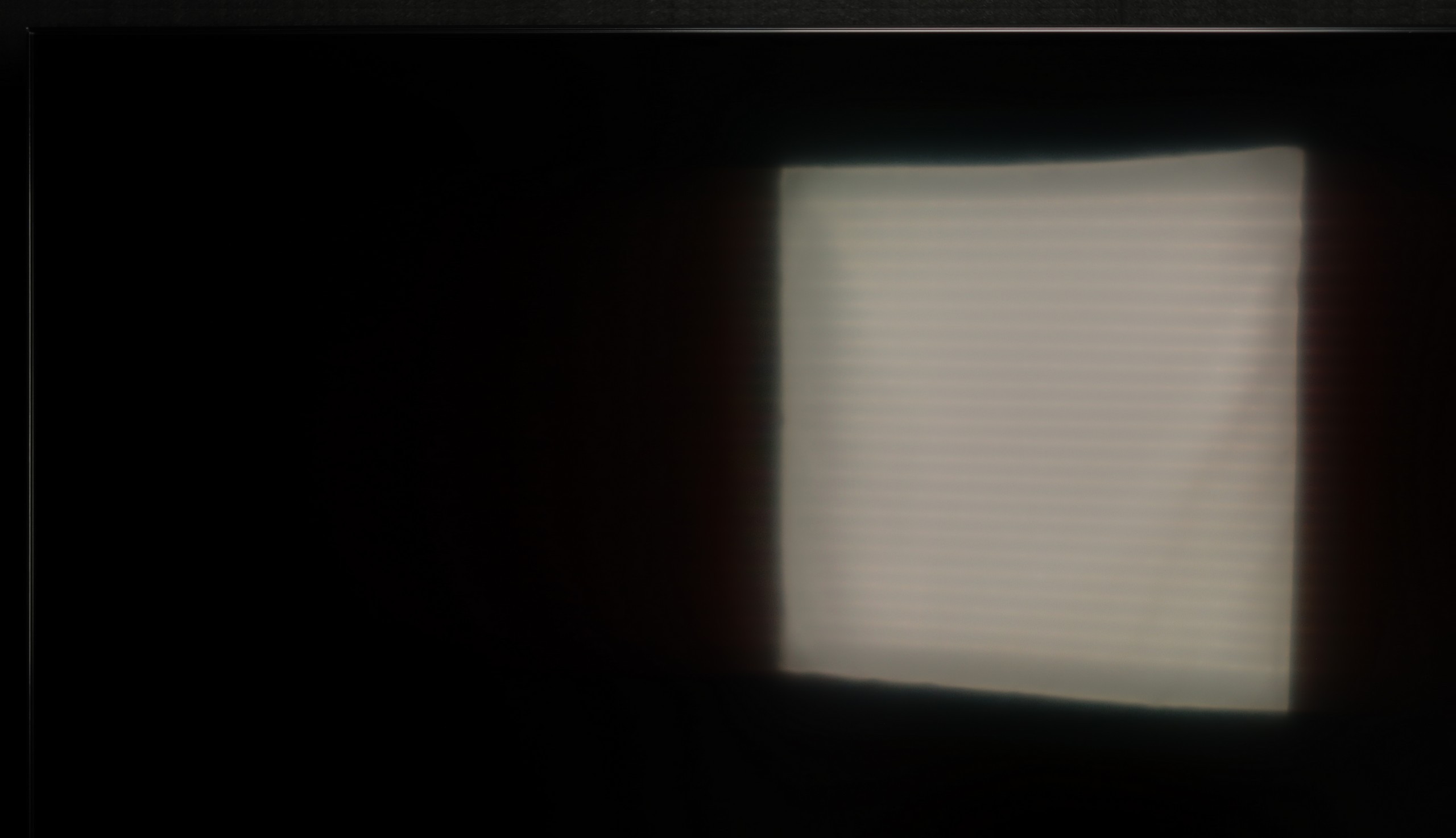
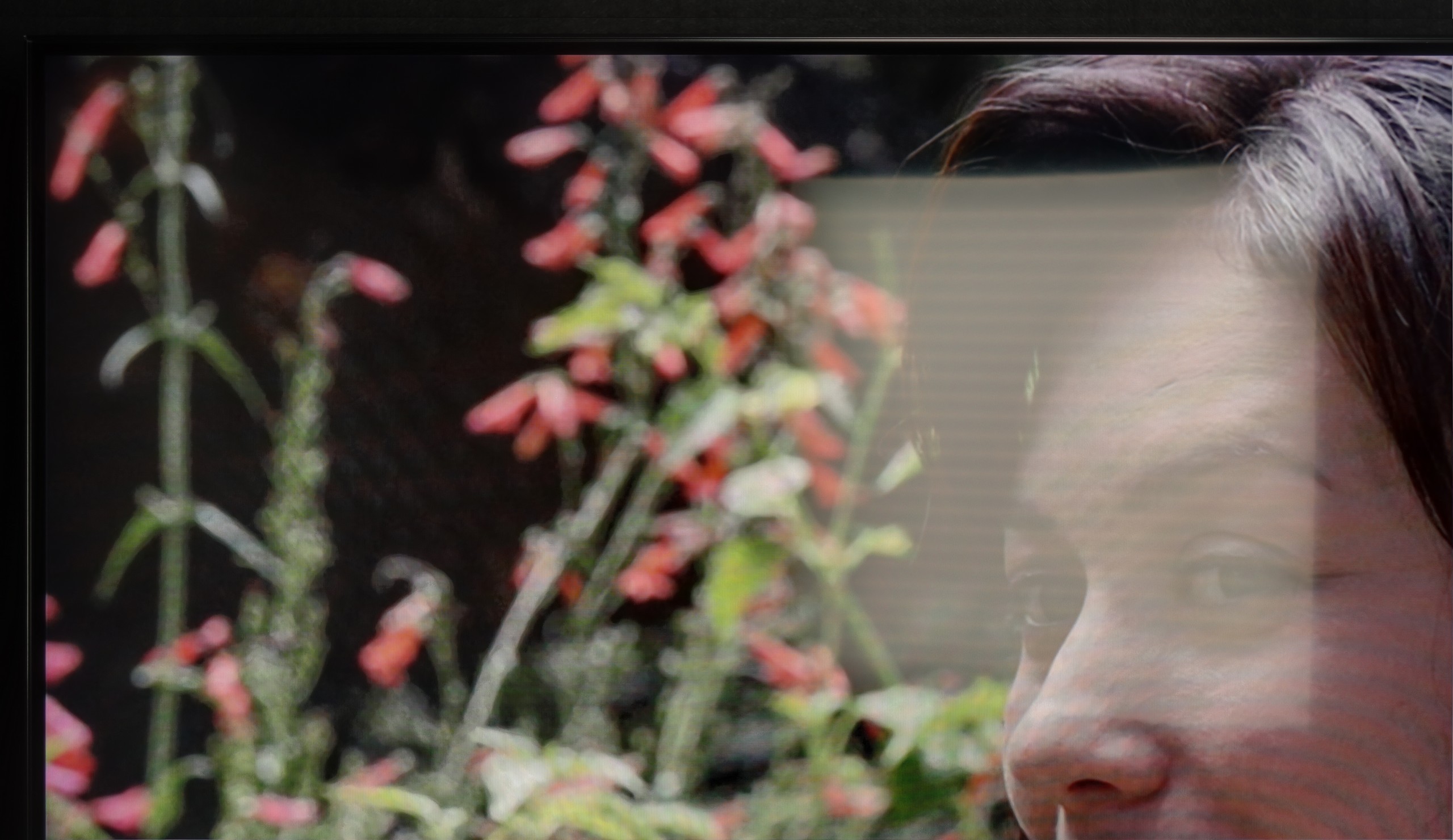
Panel finish: Satin
Reflection suppression: Decent
Black levels during daytime: Very Good
The performance of the QN80F during the day is an interesting topic because the 100-inch version differs from the smaller sizes not only in scale but also in the coating used. Samsung has opted for a different type of anti-reflective layer here, and it's fair to say that the effect is not as good as in the smaller models – reflections are somewhat more noticeable, especially with bright light coming in from the window. On the other hand, the manufacturer has found a way around this, as the 100-inch QN80F compensates with its sheer brightness. The average luminance in SDR content exceeds 620 nits, which practically provides a strong reserve for viewing even in brightly lit rooms. In everyday use, the difference between the weaker reflection suppression and higher brightness is practically negated – the television maintains readability and does not lose clarity even in the middle of the day. The end result is that although the coating in this version is not among the best, the high brightness of the QN80F performs better in bright conditions than one might expect.
Panel brightness
Average luminance SDR
Samsung QN80F 100" : 623 cd/m2
SAMSUNG QN80F 100" - TV features
7.7/10
System: Tizen
System performance: Very good
- HDMI inputs: 0 x HDMI 2.0, 4 x HDMI 2.1 48Gbps
- Outputs: Toslink (Optical audio), eARC (HDMI), ARC (HDMI)
- Network Interfaces: Wi-Fi 2.4GHz, Wi-Fi 5GHz, Ethernet (LAN) 100Mbps
- TV reception: DVB-T, DVB-T2, DVB-S, DVB-S2, DVB-C
Classic features:
Recording to USB (terrestrial TV): No
Recording programming: No
Picture in Picture (PiP): Yes
RF remote control (no need to aim at the screen): RF
Backlit remote control: No
Teletext: Yes
Audio only mode: Yes
Bluetooth headphones support: Yes
Simultaneous Bluetooth headphones & TV audio: Yes
Smart features:
AirPlay: Yes
Screen mirroring (Windows Miracast): Yes
Voice search: Yes
Voice search in native language: Yes
Ability to connect a keyboard and mouse: Yes








SmartTV Features: Tizen
When it comes to smart features, the QN80F has plenty to boast about. Samsung relies on Tizen, and it’s clear that this system has been refined over the years. All the major streaming apps are available, voice search works, and there’s AirPlay and Miracast, so there’s no issue with casting content from your phone or laptop. The most interesting aspect, however, is that the TV can integrate other devices in the home into its ecosystem – with SmartThings and support for the Matter standard, you can connect bulbs, robotic vacuum cleaners, or even devices from other brands. In practice, the QN80F becomes not just a screen for movies, but also a convenient control centre for the entire apartment. Of course, it’s still a closed system, so a few less popular apps might be missing, but let’s be honest – for 99% of users, it has everything they need and even more.
Classic Features
The traditional features on the QN80F perform quite well, although a few things are lacking. On the plus side, it has PiP, or picture-in-picture – a feature that is rarely found these days but can still be very practical. Additionally, we have EPG, still functioning teletext, and Bluetooth support, which makes it easy to pair headphones or a soundbar. On the downside, it lacks USB recording from the built-in tuners, as well as a remote with a traditional numeric keypad. Instead, we get Samsung's signature small remote, which may initially seem too minimalist. It must be noted, however, that this unassuming gadget hides a lot of capabilities and can control other devices, such as satellite decoders, consoles, or Blu-ray players, so in practice, one remote is enough to manage the entire setup in the lounge.
Sound connection options
HDMI audio:
Other audio outputs:
Toslink: Yes
Wireless audio:
Bluetooth: Yes
Samsung Q-Symphony (Speaker extension): Yes
Supported audio formats (external HDMI eARC audio):
Dolby Digital Plus 7.1: Yes
Dolby True HD 7.1: No
Dolby Atmos in Dolby Digital Plus (JOC): Yes
Dolby Atmos in Dolby True HD: No
DTS:X in DTS-HD MA: No
DTS-HD Master Audio: No
Senior accessibility
Numeric keyboard on TV: No
Font size adjustment: Yes
Audio description: Yes
SAMSUNG QN80F 100" - Apps
8.7/10























SAMSUNG QN80F 100" - Playing files from USB
9/10

| Maximum photo resolution: | Supported photo formats: |
|---|---|
The built-in media player in the QN80F performs decently, but it's hard to talk about full extravagance. It handles movies quite well – easily playing popular video formats, from simple MP4s to heavier containers. It’s not at the level of all-in-one apps like VLC, but it’s sufficient for everyday viewing. Especially since the latest update addressed the issue with supporting various subtitle formats in films. The situation is a bit worse when it comes to photos. Support is basically limited to JPG and BMP, so if someone keeps their photo archive in a different format, they will need to use an additional app or will be forced to convert their photos.
SAMSUNG QN80F 100" - Sound
6.7/10
87dB
Maximum volume
Supported codecs
(TV speakers)
Dolby Digital Plus 7.1
Dolby True HD 7.1
Dolby Atmos in Dolby Digital Plus (JOC)
Dolby Atmos in Dolby True HD
DTS:X in DTS-HD MA
DTS-HD Master Audio
QN80F performs well on its own – with a bit of bass, some space thanks to Dolby Atmos, and clear enough that daily watching of movies or series isn’t tiring. But with a 100-inch screen, it's begging for a soundbar. Only then will the scale of image and sound start to align, because while the TV does a decent job, it's hard to expect the built-in speakers to fill such a large living room with sound.
Sound Quality Test:
Acoustic Measurements
87dBC (Max)
75dBC
SAMSUNG QN80F 100" - Panel details
Software version during testing: T-PTMFDEUC-0090-1110.7, E2500007, BT-S
Subpixel Structure:
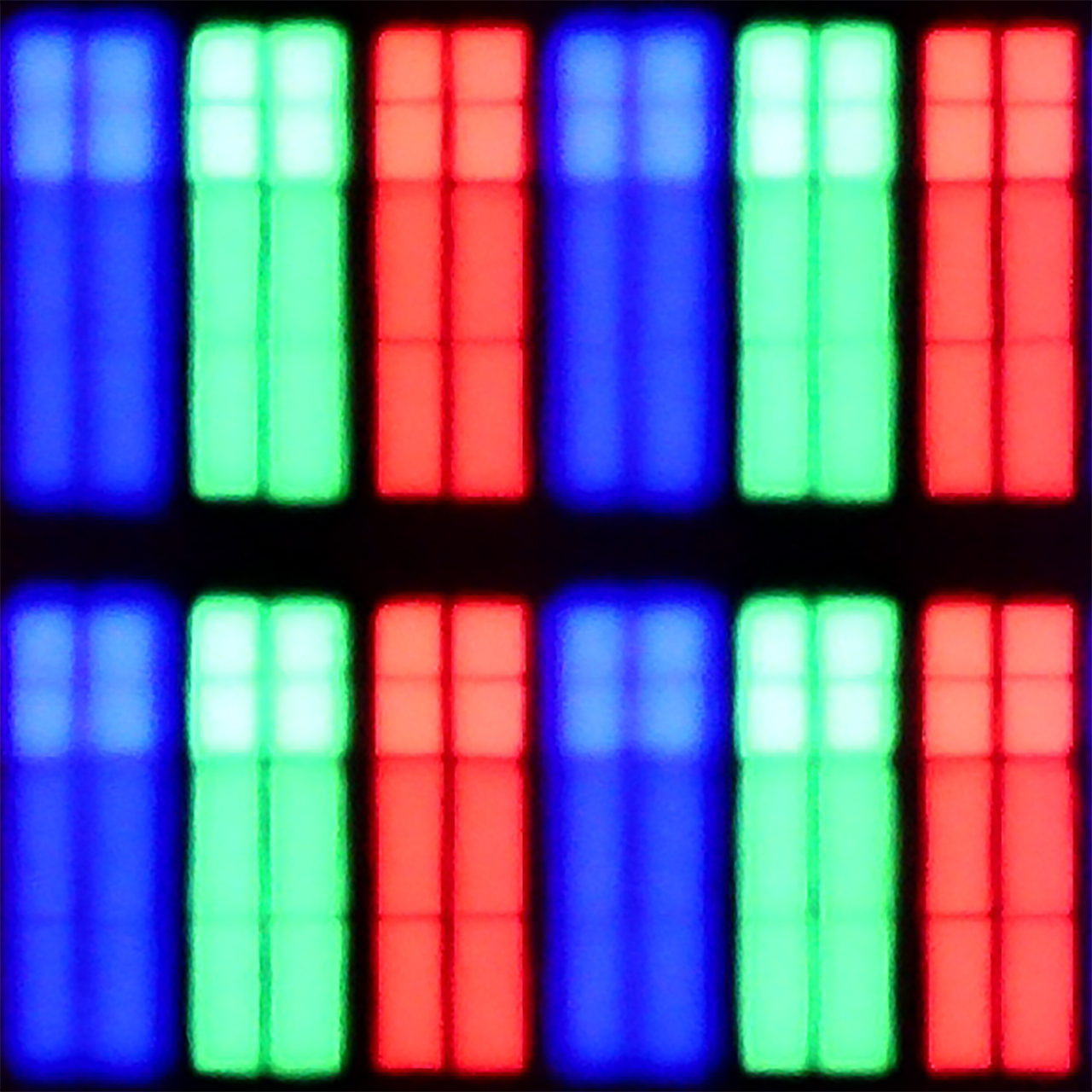
Panel uniformity and thermal imaging:
Backlight Type: Mini-LED QLED

Founder and originator of the "ChooseTV" portal

Journalist, reviewer, and columnist for the "ChooseTV" portal




